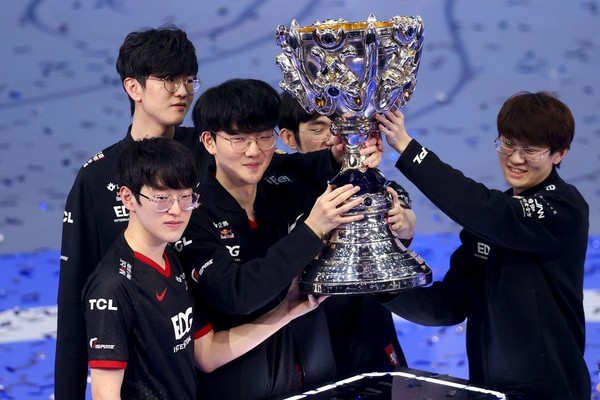League of Legends (LoL) Esports has come a long way since its infancy in 2011. The first world championship, later dubbed as “Worlds”, was held in a small congress hall in Sweden, a stark contrast from future venues like the Staples Center, Seoul World Cup Stadium, and Beijing National Stadium. As the scene grew larger, so did the stability of being a professional LoL player. Pioneers of the Esport largely had inconsistent funding, competing for a 100,000 USD prize pool in a tournament that happened only once a year. Now, 100,000 USD doesn’t even match the average salary of pro players of the four major leagues: North American League Championship Series (LCS), LoL European Championship (LEC), LoL Champions Korea (LCK), and China’s LoL Pro League (LPL). Despite the remarkable growth of the scene, one thing has remained constant: the dominance of the Korean and Chinese teams. The only Worlds that wasn’t won by an Eastern team was the first one, when South Korea and China didn’t even have teams to send! Since then, the LCK have won six Worlds, five of them consecutively, and the LPL won three out of the four most recent Worlds. What then could be possible factors that divide the performance of Eastern and Western teams?

One possible explanation for the difference between the four regions is their playerbase. A larger playerbase would naturally lead to more competition, subsequently producing top tier talent. China, which has the largest playerbase out of all the main regions, has consistently contended for the championship in recent years. On the other hand, the region with the smallest playerbase — LCS — is unanimously perceived to be the weakest major region. However, that isn’t the whole story. South Korea, which has only the third largest playerbase out of the four major regions, has clearly been a dominant region in the Esport’s young history. Moreover, the fact that a lot of the LCK’s premier talents have actually been imported by the LPL and the LCS throughout the years makes it even more evident that a large playerbase is not the only thing that matters.
While many would expect salary to be a main factor, it actually is not. Players from the LCS make roughly 410,000 USD a year while the average salary of their Korean counterparts clock in at approximately 150,000 USD. Though 150,000 USD is nothing to scoff at, it’s important to note that most players who end up being imported by the LCS carry with them a prestige that begets a high price. Just last year, a North American team paid 5 million USD for the buyout of Luka “Perkz” Perkovic and signed him to a contract that netted him close to 2.5 million USD this year. All of that to ultimately not even come close to winning Worlds. Other regions do pay their stars, the discrepancy in salary lies in the tier players that are great but not generational. Sang-hyeok “Faker” Lee is widely considered the “GOAT” of LoL Esports and a huge celebrity in South Korea. So it was no surprise when he signed an impressive 2.5 million USD three-year deal in 2017. But players like Yong-in “CoreJJ” Jo had to seek greener pastures in the LCS, in spite of winning Worlds and still playing at a high level. Despite talent constantly bleeding over to other regions for higher pay (it’s not uncommon for the salary of premier imports to reach 1 million USD), South Korea remains the region to beat.
Another point of consideration is the perception of and culture around gaming in these different regions. South Korea has a strong PC gaming culture centered around PC bangs, where LoL has an astounding play rate consistently around 50%. Moreover, Eastern teams generally have very strict schedules, with 16-hour work days not being uncommon. On the other hand, most Americans generally enjoy first-person shooter games more than multiplayer online battle arenas. Coupled with their reputation of being too relaxed, the shortcomings of LCS teams do not come as a surprise. The LEC, however, managed to remain competitive in three of the past four years, reaching the finals twice, despite having a less overbearing practice schedule.
At the end of the day, it’s difficult to pinpoint the exact reason behind the superior performance of Eastern teams. In reality, it’s probably a combination of all these factors and more. The recent years have been promising for the West though, as they have put up a better fight each time. Western fans of course will long for the day they win Worlds, but for now, fans of LoL Esports can only appreciate the sustained dominance of the East.

